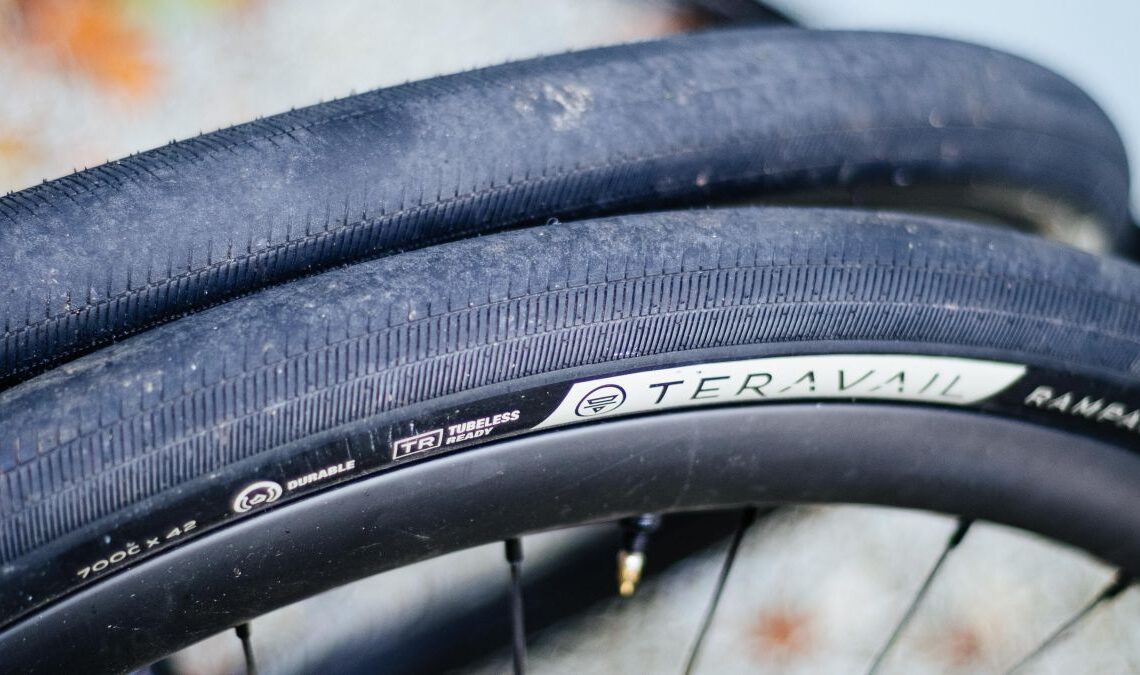Every review I pen of late begins with a disclaimer that ‘Gravel’ means many different things to many different people. Mostly for the sake of neatness, tyres that are deemed ‘all-road’ slip into our guide to the best gravel tyres, but the term ‘all-road’ is perhaps even more nebulous than ‘gravel’. All-road implies all roads, so that can be literally everything from perfect tarmac to a bumpy, gravelly, muddy forest service road.
The Teravail Rampart is an all-road tyre, but it’s definitely designed for actual roads. It’s a wonderful, big slick that can handle broken tarmac and light gravel in the dry, but beyond that, you’ll want something more specialized. For endurance riding, fast touring, or just making your gravel bike supremely good fun on tarmac these are a pretty fantastic option, as we’ll get into. They also make a brilliant set to challenge the best winter road bike tyres.
Design and aesthetics
The more knobbly the tyre, the easier this section is to write. The Teravail Ramparts don’t feature lugs, just a lovely wide, totally slick centreline and shoulders descending into three tiers of striations that run nearly perpendicular to the direction of movement of the tyre. It’s a simple recipe, visually speaking, and from a distance, they look completely slick.
While the tread pattern is consistent throughout the range you do get a choice of black or tan sidewalls in both light and supple, and durable options, as well as four widths in 700c up to 42mm, and a single 650b width (47mm). I was furnished with a 42mm, black, durably cased setup. Normally I’d opt for light and fast for general riding, but for these, I went with durable as I wanted to test them out as a light touring tyre, and I prefer stiffer sidewalls when the bike is loaded down; we’ll get into that shortly though.
There isn’t a great deal more in terms of visuals, though I’d like to make it known that at the time of writing the Teravail sidewall branding is my current favourite. Big, but not too big, no bright colours to clash with your paint, not too many stats, and the logo is the right way up with the valve at the top.
Underneath the visuals though the interesting thing from a construction point of view, beyond the usual puncture protection strips and the like, is that the tread rubber itself in the centre is around 1mm…
Click Here to Read the Full Original Article at CyclingNews RSS Feed…

